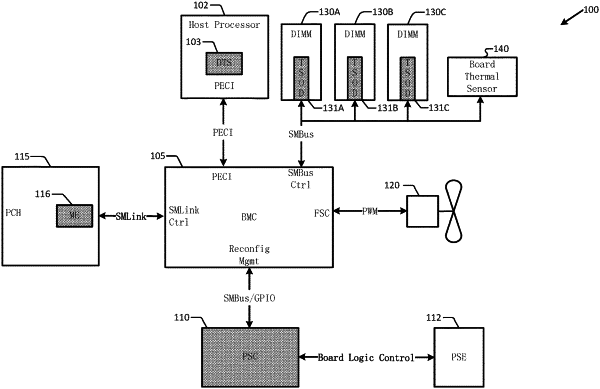| CPC G06F 9/44 (2013.01) [G06F 1/20 (2013.01); G01K 7/00 (2013.01); G06F 1/26 (2013.01)] | 30 Claims |

|
1. One or more non-transitory computer-readable media comprising machine-readable instructions to cause a power sequencing controller (PSC) to at least:
responsive to detection of an ambient temperature of a computing platform below a threshold ambient temperature or a temperature of a target component of the computing platform below a threshold operating temperature, respectively, during a power up sequence at a first time,
cause a power state of the target component to change from a first power state to a second power state, the target component to receive signals to cause the target component to perform one or more operations of a boot sequence for the computing platform in the first power state, the performance of the one or more operations of the boot sequence by the target component paused when the target component is in the second power state; and
turn on a first power rail to heat the target component when the target component is in the second power state; and
responsive to detection of the ambient temperature at or above the threshold ambient temperature or the temperature of the target component at or above the threshold operating temperature, respectively, at a second time after the first time,
turn off the first power rail; and
cause the power state of the target component to change from the second power state to the first power state.
|